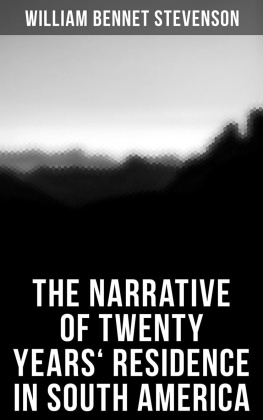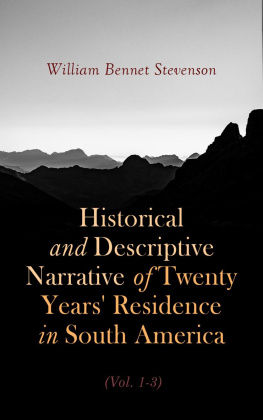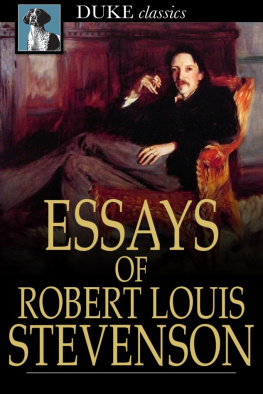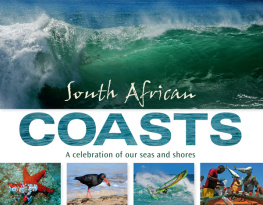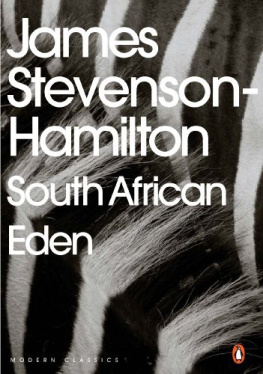R. L. Stevenson - In The South Seas
Here you can read online R. L. Stevenson - In The South Seas full text of the book (entire story) in english for free. Download pdf and epub, get meaning, cover and reviews about this ebook. year: 1998, publisher: Penguin Books, genre: Art. Description of the work, (preface) as well as reviews are available. Best literature library LitArk.com created for fans of good reading and offers a wide selection of genres:
Romance novel
Science fiction
Adventure
Detective
Science
History
Home and family
Prose
Art
Politics
Computer
Non-fiction
Religion
Business
Children
Humor
Choose a favorite category and find really read worthwhile books. Enjoy immersion in the world of imagination, feel the emotions of the characters or learn something new for yourself, make an fascinating discovery.

- Book:In The South Seas
- Author:
- Publisher:Penguin Books
- Genre:
- Year:1998
- Rating:5 / 5
- Favourites:Add to favourites
- Your mark:
- 100
- 1
- 2
- 3
- 4
- 5
In The South Seas: summary, description and annotation
We offer to read an annotation, description, summary or preface (depends on what the author of the book "In The South Seas" wrote himself). If you haven't found the necessary information about the book — write in the comments, we will try to find it.
In The South Seas — read online for free the complete book (whole text) full work
Below is the text of the book, divided by pages. System saving the place of the last page read, allows you to conveniently read the book "In The South Seas" online for free, without having to search again every time where you left off. Put a bookmark, and you can go to the page where you finished reading at any time.
Font size:
Interval:
Bookmark:

IN THE SOUTH SEAS
ROBERT LOUIS STEVENSON was born in Edinburgh in 1850. The son of a prosperous civil engineer, he was expected to follow the family profession, but was allowed to study law at Edinburgh University. Stevenson reacted strongly against the Presbyterian respectability of the citys professional classes and this led to painful clashes with his parents. In his early twenties he became afflicted with a severe respiratory illness from which he was to suffer for the rest of his life; it was at this time that he determined to become a professional writer. The effects of the often harsh Scottish climate on his poor health forced him to spend long periods abroad. After a great deal of travelling he eventually settled in Samoa, where he died on 3 December 1894. At the time of his death Robert Louis Stevenson was working on his unfinished masterpiece, Weir of Hermiston.
Stevenson is most widely known for his fiction, notably Dr Jekyll and Mr Hyde, Treasure Island and Kidnapped, but he also wrote works of non-fiction. These include his descriptive and historical books on the South Seas area In the South Seas (1896) and A Footnote to History (1892), and Father Damien (1890), Stevensons celebrated defence of a Belgian priest who devoted his life to the care of lepers.
NEIL RENNIE is a Reader in English at University College London and the author of Far-Fetched Facts: The Literature of Travel and the Idea of the South Seas (1995).
R. L. STEVENSON
Edited with an Introduction and Notes by
NEIL RENNIE
PENGUIN BOOKS
PENGUIN BOOKS
Published by the Penguin Group
Penguin Books Ltd, 27 Wrights Lane, London W8 5TZ, England
Penguin Putnam Inc., 375 Hudson Street, New York, New York 10014, USA
Penguin Books Australia Ltd, Ringwood, Victoria, Australia
Penguin Books Canada Ltd, 10 Alcorn Avenue, Toronto, Ontario, Canada M4V 3B2
Penguin Books (NZ) Ltd, Private Bag 102902, NSMC, Auckland, New Zealand
Penguin Books Ltd, Registered Offices: Harmondsworth, Middlesex, England
First published in book form 1896
Published in Penguin Classics 1998
1 3 5 7 9 1 0 8 6 4 2
Introduction and Notes Copyright Neil Rennie, 1998
All rights reserved
The moral right of the editor has been asserted
Except in the United States of America, this book is sold subject to the condition that it shall not, by way of trade or otherwise, be lent, re-sold, hired out, or otherwise circulated without the publishers prior consent in any form of binding or cover other than that in which it is published and without a similar condition including this condition being imposed on the subsequent purchaser
EISBN: 9780141907031
Quotations from Stevensons MS journals of the Casco and Equator voyages are by permission of the Huntington Library, San Marino, California, and quotations from Lloyd Osbournes Diary for 1889 are by permission of the Beinecke Library, Yale University, New Haven, Connecticut. I would like to thank Ernest Mehew for allowing me to see the last two volumes of The Letters of Robert Louis Stevenson in proof, and for kindly informing me about the Auckland Star versions of Stevensons South Sea Letters. I would also like to thank for their generous help: John and Winifred Rennie, Hugo Williams, Karl Miller, Philip Horne and Henry Woudhuysen.
Mr Stevenson smiled humorously. Treasure Island, he said, is not in the Pacific.
(Sydney Morning Herald, 14 February 1890)
In the winter of 18878 Robert Louis Stevenson was at Saranac in the Adirondack Mountains with his mother and his American wife, Fanny, and stepson, Lloyd Osbourne. Lloyd had toothache, according to Stevensons mothers diary, and to amuse him Louis plans a yacht trip, and they discuss all the arrangements even to where the piano is to stand in the saloon. According to his Autobiography, McClure was reminded of Stevensons amusing travel books:
I thought at once of An Inland Voyage and Travels with a Donkey, and told him that if he would write a series of articles describing his travels, I would syndicate them for enough money to pay the expenses of his trip. I think the South Seas must have been mentioned that evening, for I remember that after I returned to New York I sent him a number of books about the South Seas, including a South Pacific directory. The next time I went to Saranac, we actually planned out the South Pacific cruise, talking about it until late into the night.
Now these South Sea romances were to be transformed into Pacific reality. Lloyd Osbourne remembered how they wintered at Saranac with A. G. Findlays Directory for the Navigation of the South Pacific Ocean:
Such was our reading, such the stuff our dreams were made of as the snow drove against our frozen windows; as the Arctic days closed in, gloomy and wild, and snow-shoes and buffalo coats were put by to steam in corners while we gathered round the lamp. Visions of palms while our ears were yet tingling from the snow we had rubbed on to save them from frost-bite; cascading streams in tropic Arcadies, with water as clear as crystal, while our own bedroom jugs upstairs were as solid as so much rock; undraped womanhood, bedecked with flowers, frisking in vales of Eden, while we were wooled to the neck like polar explorers, and dared not even thaw too quickly for fear of chilblains.
At 5 a.m. on 28 June 1888 the chartered yacht Casco passed from San Francisco through the Golden Gate into the Pacific. Captain Otis had read Treasure Island but no further in Stevensons works, as he informed the writers mother.prepared for the future with prayers. He was keeping a journal which is more a draft of his travel book than a personal journal.
On 12 August the Casco sailed round the island, past the valley described in Herman Melvilles Typee (1846), to the capital, Taiohae, another lovely bay which reminded Stevensons mother faintly of Rothesay, though without the lovely views outside.
They sailed from Taiohae on 22 August, with the missionary Frre Michel Blanc aboard, and anchored at Tahauku, Hiva Oa, on 23 August. Stevenson, whose health was always precarious, had a headache, but the others visited Atuona, two miles away in the next bay, where Lloyd took photographs and Frre Michel arranged the amusing adoption of Fanny, Lloyd and Margaret Stevenson by a Marquesan family. On Monday 27 August Stevenson rode up to the mountains with Frre Michel but caught a chill. A few days later, on 1 September, another yacht arrived, the Nyanza, with a Captain Dewar last encountered fifteen years previously on the French Riviera, and Stevenson caught a fresh chill at dinner on board.
Hoping a change would be good for him, they sailed from Hiva Oa on 4 September, and Stevenson wrote on the 6th to his old Edinburgh friend Charles Baxter: I shall have a fine book of travels, I feel sure; and will tell you more of the South Seas after very few months than any other writer has done except Herman Melville
Stevenson had a cold, however, which worsened, and the Casco sailed for Tahiti, where there were doctors. The island was sighted at daybreak on 27 September, and Stevenson was taken ashore to a hotel at Papeete, the capital, where the doctor warned of the possibility of a fatal haemorrhage. Stevenson called for Captain Otis and calmly made arrangements for such a circumstance. His condition improved, however, and he moved with Fanny into a rented house, near the ruins of the prison where Melville had been confined in 1842. Meanwhile Lloyd and Stevensons mother made a typewritten copy of his journal, which he had suspended.
Font size:
Interval:
Bookmark:
Similar books «In The South Seas»
Look at similar books to In The South Seas. We have selected literature similar in name and meaning in the hope of providing readers with more options to find new, interesting, not yet read works.
Discussion, reviews of the book In The South Seas and just readers' own opinions. Leave your comments, write what you think about the work, its meaning or the main characters. Specify what exactly you liked and what you didn't like, and why you think so.

